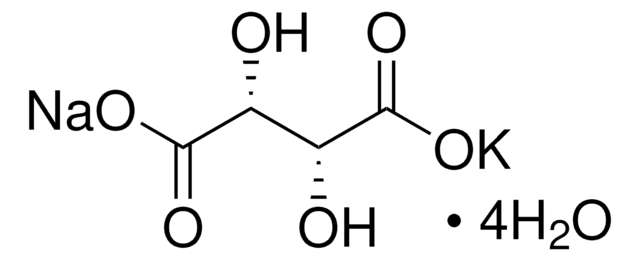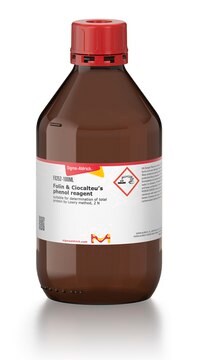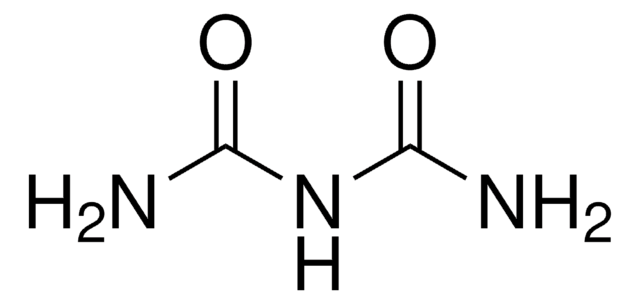Kluczowe dokumenty
36018
Fehling′s reagent I for sugars
reag. Ph. Eur., for determination of sugar, solution I: copper(II) sulfate
Synonim(y):
Copper(II) sulfate solution, Cupric sulfate solution acc. to Fehling, Cupric sulfate standard
About This Item
Polecane produkty
klasa czystości
for determination of sugar
Poziom jakości
agency
USP/NF
reag. Ph. Eur.
stężenie
17.6 g/L±0.1 g/L Cu
gęstość
1.038-1.060 g/mL at 20 °C
przydatność
in accordance for application
Zastosowanie
food and beverages
general analytical
pharmaceutical (small molecule)
ciąg SMILES
[Cu++].[O-]S([O-])(=O)=O
InChI
1S/Cu.H2O4S/c;1-5(2,3)4/h;(H2,1,2,3,4)/q+2;/p-2
Klucz InChI
ARUVKPQLZAKDPS-UHFFFAOYSA-L
Szukasz podobnych produktów? Odwiedź Przewodnik dotyczący porównywania produktów
Opis ogólny
Hasło ostrzegawcze
Warning
Zwroty wskazujące rodzaj zagrożenia
Zwroty wskazujące środki ostrożności
Klasyfikacja zagrożeń
Aquatic Acute 1 - Aquatic Chronic 2
Kod klasy składowania
12 - Non Combustible Liquids
Klasa zagrożenia wodnego (WGK)
WGK 3
Temperatura zapłonu (°F)
Not applicable
Temperatura zapłonu (°C)
Not applicable
Wybierz jedną z najnowszych wersji:
Certyfikaty analizy (CoA)
Nie widzisz odpowiedniej wersji?
Jeśli potrzebujesz konkretnej wersji, możesz wyszukać konkretny certyfikat według numeru partii lub serii.
Masz już ten produkt?
Dokumenty związane z niedawno zakupionymi produktami zostały zamieszczone w Bibliotece dokumentów.
Klienci oglądali również te produkty
Nasz zespół naukowców ma doświadczenie we wszystkich obszarach badań, w tym w naukach przyrodniczych, materiałoznawstwie, syntezie chemicznej, chromatografii, analityce i wielu innych dziedzinach.
Skontaktuj się z zespołem ds. pomocy technicznej










